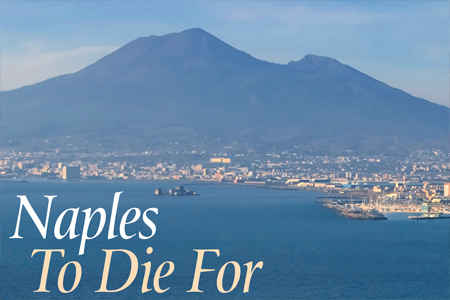
Naples to Die For
Issue 90 March 2012
Exploring Naples away from the tour guides and books, Tam Hussein discovers a city full of beauty, good food, and a series of dark secrets.
When Stendhal said “See Naples and die” I didn’t know whether to believe the 19th century author. After all, the old hedonist had said the same thing about Venice too, but standing on the precipice of the famed volcano Vesuvius I knew he could’ve meant that literally. This sulphurous beast had consumed Pompeii and Herculaneum with just a belch. My father-in-law was my guide for the day, and as we stood on the volcano, it became abundantly clear why the Greeks, despite the risk of invasion from sea and an active volcano, decided to colonise the bay. It possessed fertile volcanic soil for its grapes and citrus fruits and a calm deep harbour. Unsurprisingly by the ninth century BC this ‘Neapolis’ or new city had become a hub for trade and industry. I also understood why the Romans would make this place into a perfect holiday retreat for rich emperors and famous lawyers like Cicero. Fortunately these days you don’t need to be rich to holiday here; low cost airline carriers, and relatively cheap hotels around the railway station, Piazza Garibaldi ,make it affordable for those on a budget.
If I had time I would have liked to have spent several days exploring the horde of artefacts from Pompeii and Herculaneum at the National Museum, and the art galleries bursting with renowned artists like Carvaggio to the lesser known painters like Rosa and Solimena. But my father-in-law wasn’t that sort of man; he wanted to show me ‘real Naples’.
Bookmark this |
|
Add to DIGG |
|
Add to del.icio.us |
|
Stumble this |
|
Share on Facebook |
|
Share this |
|
Send to a Friend |
|
Link to this |
|
Printer Friendly |
|
Print in plain text |
|


Comments
0 Comments